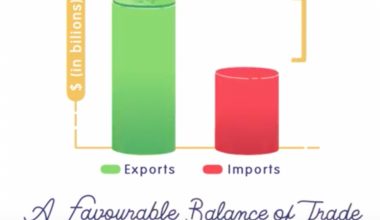Employee burnout is a real problem in the modern workplace. It is a form of psychological distress that can significantly affect an employee’s productivity, well-being, and overall job satisfaction. Unfortunately, burnout is often overlooked by employers and can lead to long-term damage to both the employee and the organization. In this blog, we will discuss the obvious signs of employee burnout, the statistics surrounding it in 2023, and how to prevent it.
Introduction to Employee Burnout
Burnout is a common problem among employees, especially in the wake of the pandemic. It is a state of prolonged physical, mental, and emotional exhaustion caused by prolonged work stress, lack of job satisfaction, and inadequate work-life balance. It can have serious negative effects on an employee’s performance and morale, as well as the overall success of the organization.
When an employee experiences burnout, they often feel overwhelmed, unmotivated, and unproductive. They may also become emotionally detached from their work and feel unable to make progress in their tasks. Burnout can also lead to absenteeism, decreased job performance, and even job loss in some cases.
What are the Signs of Employee Burnout?
Employee burnout signs and outcomes are frequently interwoven. Based on your company’s key performance indicators, here’s how you can assess if your staff is burned out:
- Sickness – Increased employee absence due to illness may cost your firm working days (and, as per the previous data point, that adds up to 17.8 million working days UK-wide).
- Blunders – Employees who are experiencing burnout may make more mistakes on a daily basis because they are less passionate or careful about what they are doing.
- Motivation – A lack of motivation leads to a lack of innovation and productivity. If you believe there has been a brain drain at your organization but no one has gone, you may be suffering from burnout.
- Turnover – Higher staff turnover and attrition rates, as well as people leaving the organization more quickly, might result not only in fewer employees but also in higher total recruiting costs.
- Customers – If your customer service ratings have been declining, it could be due to fatigue. Your staff may not be approaching or responding positively to customers.
Employee burnout, as a result, has a significant impact on the bottom line. That is why it is critical for modern businesses to define burnout and find strategies to prevent it.
What Causes Employee Burnout?
There are several factors that can lead to employee burnout, including:
- Unreasonable workloads: An employee may be asked to take on more work than they can realistically complete. This can lead to an increase in stress levels and a decrease in job performance.
- Lack of recognition: An employee may feel as though their efforts are not appreciated or valued. This can lead to an increase in stress levels and a decrease in motivation.
- Poor job fit: An employee may be in a job that does not match their skills and interests. This can lead to an increase in stress levels and a decrease in job performance.
- Poor work-life balance: An employee may be required to work long hours or have difficulty managing their work and personal life. This can lead to an increase in stress levels and a decrease in job performance.
- Poor communication: An employee may have difficulty communicating with their colleagues or managers. This can lead to an increase in stress levels and a decrease in motivation.
Employee Burnout Statistics 2023
According to a recent survey, employee burnout is a major problem in the workplace. The survey found that 60% of employees are feeling burned out, and 70% of those employees say that their workload is the primary cause.
The survey also found that burnout is more common among certain demographics. For example, burnout is more common among female employees (68%) than male employees (57%). It is also more common among younger employees (ages 18-34) than older employees (ages 55+).
Other survey findings include:
- 65% of employees say that their job is not fulfilling.
- 60% of employees say that their job is too stressful.
- 57% of employees say that their job does not provide enough work-life balance.
- 52% of employees say that their job does not provide enough recognition.
Steps to Avoiding Employee Burnout
Massages, training, and wellness seminars are all beneficial, but they don’t address the root cause of the problem. To prevent employee burnout, you must first identify the source of the problem.
Here are five steps to help you create a “burnout prevention framework” for your company…
#1. Eliminate Multitasking
Consider multitasking a remnant of a bygone era. After all, studies have proven that switching between tasks does not increase productivity – it decreases productivity and increases stress!
In this sense, switching between tasks is counterproductive. As a result, your business must devise novel methods to prevent workers from switching between tasks that are unnecessary.
One simple example would be encouraging staff to “mute” their different communication options. This way, people are checking in on messages mindfully, rather than allowing chimes or bells to distract them from their tasks.
Fewer interruptions and switching equal increased productivity, attention, and happier employees! Overall, this is a critical component of how we perceive strategic work as a competitive advantage for your company.
#2. Request that management set an example.
It is not enough to advise that multitasking be eliminated; it must also be a leadership initiative in your organization. This is especially true when managing remote teams (who run the risk of being ‘always on,’ day or night).
Leaders should do it first, then promote it to employees and set a positive example so that your workforce feels empowered to do the same.
It may potentially become a company-wide program. ‘Meeting-free Mondays,’ for example, could become the norm in your company. This way, meetings are avoided for one day, allowing everyone to concentrate.
#3. Establish, Modify, and Optimize Corporate Values
Your company’s core values are one of the clearest demonstrations of what is important to you and what you expect from your employees. If you don’t have any, that should be your first step.
If you have them, go over them again. But don’t just update them for the sake of updating them; think about how you live those principles and how they transfer into lived employee experiences.
Preventing burnout requires that everyone in your firm understands that their health comes first. It is critical to express that as part of your corporate values while also making it a reality (see our next step).
#4. Establish Work-Life Balance
Work-life balance has become an extremely important topic in the last decade or so. Not only for employees but also for organizations that must assist in achieving this balance. They must be the ones who take an active role in preventing burnout.
How does this appear? It could include the following for your company:
- Weekend email regulations are strictly enforced.
- Members should be assigned to clear sign-off teams so that they may finish strong.
- Self-care days allow people to focus solely on themselves.
- An expectation is that responses will be of high quality rather than timely.
#5. Maintain Contact!
This is especially true for HR and People executives; how can you keep your organization’s pulse? Preventing burnout begins with recognizing when and how it occurs.
So, in order to have an effective preventative policy in place, you must keep your personnel informed. Plan review meetings and appraisals, gather feedback, send out pulse surveys, and find out how individuals are feeling.
If you discover that individuals are happy, that’s fantastic! However, if they are pressured or overworked, you may need to swiftly devise activities to keep that spark alive before they burn out.
Do You Know How Your Employees Are Feeling Right Now?
The first step is to conduct an employee engagement survey to learn how your employees feel, their current engagement levels, and whether burnout is a risk for your firm. You can particularly ask your employees about:
- They are now overburdened.
- How they see the culture of your organization.
- How they rate their relationship with their boss.
- If they maintain a proper work-life balance.
Is Burnout the Employee’s Fault?
No, burnout is not the employee’s fault. Burnout is often caused by an employer’s inability to recognize and address the signs of burnout in their employees. It is the employer’s responsibility to provide a supportive and positive work environment that encourages employee well-being.
Is Burnout a Reason to Quit?
No, burnout is not a reason to quit. However, if an employee is unable to manage their stress and workload, they may need to consider taking a break or finding a job that is better suited to their skills and interests.
Can You Get Fired for Burnout?
No, you cannot get fired for burnout. Burnout is a form of psychological distress, so it is illegal for an employer to fire an employee due to burnout.
How Do I Tell My Boss I Have a Burnout?
If you think you are experiencing burnout, it is important to talk to your boss. Explain to your boss what you are feeling and ask for their help in managing your workload and stress levels. It is also important, to be honest with your boss and explain to them how your burnout is affecting your job performance.
Conclusion
Employee burnout is a real problem in the modern workplace. It can lead to decreased job performance, increased stress levels, and emotional detachment from work. It is important for employers to recognize the signs of burnout and take proactive steps to prevent it. By providing clear expectations, encouraging breaks, offering support, and recognizing achievements, employers can help prevent burnout in their employees.
Employee burnout is not the employee’s fault and should not be used as a reason to quit. It is important to talk to your boss if you are feeling burned out and ask for their help in managing your workload and stress levels.
If you are an employer, it is important to recognize the signs of employee burnout and take proactive steps to prevent it. By providing a supportive and positive work environment, employers can help prevent burnout and ensure that their employees are productive and satisfied.
Related Articles
- EMPLOYMENT RETENTION: Definition, Strategies, Tax Credits, and Rates
- 4 Ways to Build Company Culture at a Startup
- HOW DOES CAR INSURANCE WORK IN 2023?
- Starting Your Own Digital Marketing Business
- BEST ONLINE MANAGEMENT COURSES: Best Online Courses






